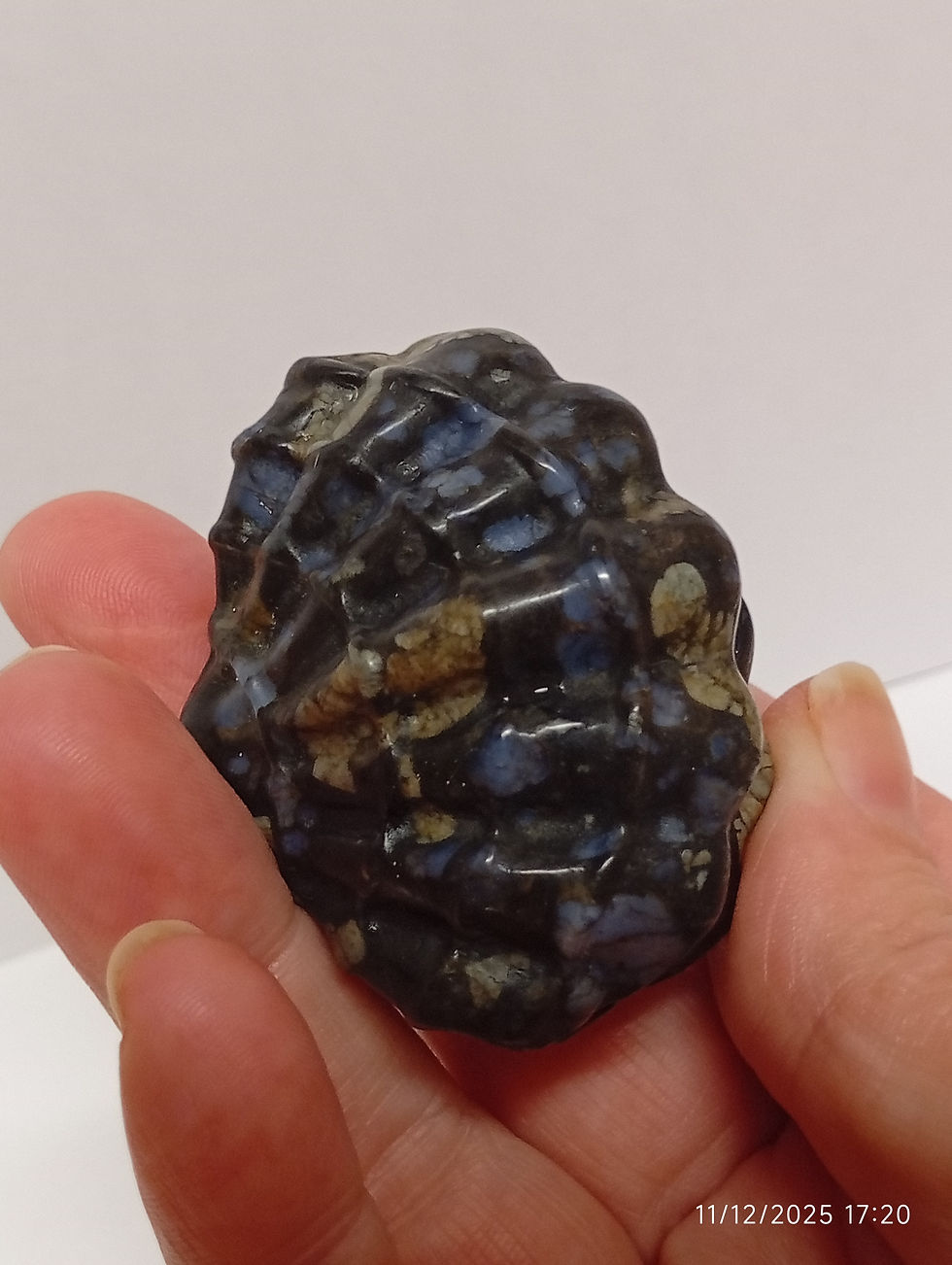A Guide to Scottish Jasper
- Katriona MacMillan

- Apr 26, 2022
- 3 min read
What is Jasper and why is it so highly treasured? Let’s talk about the ancient tradition of hand polishing jasper beads in Scotland.

You may have heard us mention a few times that rock collecting in Scotland has a long history. Crofters and those who live in the high places would pick pretty stones to sell to passing traders. Scottish stones have made their way all over the world as a result of this, but none was historically quite so revered as jasper was.
What is Jasper?
Jasper is a variety of chalcedony which is, in turn, a member of the quartz family. This harkens back to our favourite saying here at The Stone Circle:
“At the end of the day, it’s all just quartz.”
Jasper is a microcrystalline form of chalcedony with a hexagonal crystal structure, although we mostly find it as river or water washed in the UK. It is smooth but can have holes. It can come as speckled, striped, or otherwise patterned.
Jasper has a Mohs hardness of 7, just the same as chalcedony and quartz. If you tried to scratch a piece of jasper with a piece of quartz, it ought not to leave a mark. If it does leave a mark, try to rub that mark off with your finger. If the scratch remains, your rock isn’t jasper.
Scottish Jasper is highly sought after for the interesting patterns and colour displays. We find it in the following patterns and varieties:
· Picasso Jasper – where it looks like a puzzle piece
· Picture Jasper – where the lines form interesting swirls and shapes
· Spotted Jasper – where two colours combine to make spots, also known as orbicular
· Ocean Jasper – which often blends different colours together
· Dalmatian Jasper – which is white with black spots or vice versa
Remember, there are plenty of other types of jasper, such as Kabamba or bloodstone (technically green and red jasper) but we are talking about those we commonly find in Scotland today. So the above patterns are the types you should look out for.
Colour Varieties of Scottish Jasper
We find Scottish Jasper in all manner of colours. Typically, we find red and yellow, orange, green, black, white, and even purple jasper here. Some come with calcite veins, some with quartz veins. Some Scottish jasper is even agatized so that you can’t tell if it’s a jasper or an agate. FYI: if it has banding, it’s an agate. If it is solid red or orange and you can’t see through it, but it still has banding, it’s a Jasp-agate. Rocks can be more than one mineral and agates are the biggest culprits of all – but back to the jasper.
What is Active Jasper?
This is from the Witcher series and we think they made it up. Some crystal healers believe crystals need activation before they will work. They do this by holding the stone for a while to allow it to attune to their energy.
What is Jasper Used For?
Primarily, the ancient Scots shone these beads up using grinding stones or sandpaper. They would polish them in their spare time, then sell them to jewellery makers or foreign traders. Jasper beads were highly prized during the Victorian times when Scottish pebble jewellery really took off. The trade has long since died out except among diehard collectors like us.
What is jasper used for in crystal healing? The colour of the stone relates to different experiences or effects. Red jasper relates to the root chakra, while yellow to the sacral. Green jasper will help the heart, while black and white jasper are protection stones. They say meditating with a jasper palm stone can bring calm and tranquillity into your life. Whether you use them this way or not, they make beautiful additions to your crystal collection.
Where do you Find Jasper in the UK?
Jasper is second in abundance only to quartz throughout the lowlands of the UK. You can find it in rivers, in paths, in the hills, in the rocky mountains, and in the forests and fields. You can also buy rough jasper from our online crystal shop by the 500g or keep an eye out on our page for tumbled and hand polished Scottish jasper.

$50
Product Title
Product Details goes here with the simple product description and more information can be seen by clicking the see more button. Product Details goes here with the simple product description and more information can be seen by clicking the see more button

$50
Product Title
Product Details goes here with the simple product description and more information can be seen by clicking the see more button. Product Details goes here with the simple product description and more information can be seen by clicking the see more button.

$50
Product Title
Product Details goes here with the simple product description and more information can be seen by clicking the see more button. Product Details goes here with the simple product description and more information can be seen by clicking the see more button.




















Comments